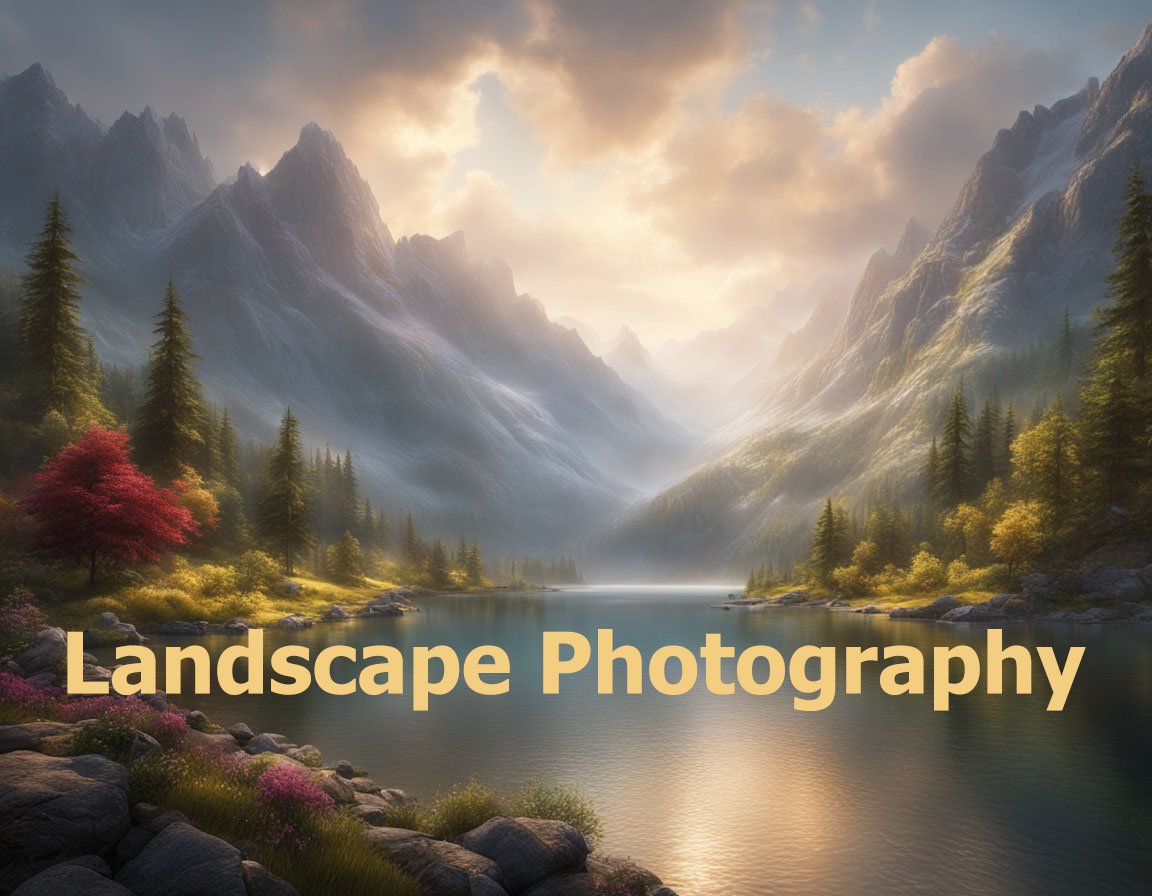Understanding Aperture for Landscape Photography
Aperture, defined as the opening in a camera lens that allows light to enter, plays a critical role in landscape photography. Selecting the correct aperture setting is crucial for achieving the desired depth of field. For expansive scenes where both foreground and background need to be in sharp focus, an aperture between f/8 and f/16 is ideal. These settings ensure a deep depth of field, ensuring sharpness across the scene. However, it’s important to avoid using very small apertures like f/22, as diffraction can occur, reducing image sharpness. Opt for the sweet spot of your lens, generally around f/8 to f/11, to achieve maximum clarity and detail.
Setting Shutter Speed for Capturing Motion
Shutter speed is another vital component for landscape photography, particularly when capturing movement such as flowing water, swaying trees, or moving clouds. A slower shutter speed, such as 1/4 or 1/2 second, blurs movement, creating a sense of motion, which can add a dynamic aspect to your landscapes. Conversely, to freeze motion, a faster shutter speed, such as 1/250 second, is necessary. When shooting during golden hours or in low-light conditions, a tripod is essential to stabilize the camera, preventing blur that results from handheld shots.
The Importance of ISO Settings
ISO settings impact your camera’s sensitivity to light. For landscape photography, it’s beneficial to use the lowest ISO setting, often ISO 100, to ensure the highest image quality with minimum noise. In scenarios with limited light, such as during twilight, you might need to increase the ISO. However, it’s important to strike a balance to avoid noise. Modern cameras offer better noise reduction at higher ISOs, but utilizing the lowest possible ISO for landscape shots ensures greater detail and clarity.
Utilizing Focus for Sharp Landscapes
Focusing correctly is paramount in landscape photography to ensure that all elements of the scene are sharp. Utilize manual focus for greater control, especially when using a tripod. Focus one-third of the way into the scene to achieve maximum sharpness through the frame. Alternatively, use your camera’s live view mode, zooming in to ensure the key elements of your scene are in focus. For infinite landscapes, set your focus to just beyond the hyperfocal distance to maximize depth of field.
White Balance and Its Effects on Color
Adjusting white balance settings according to the lighting conditions of your landscape can significantly affect the colors in your images. Use Kelvin temperatures for precise control; lower temperatures add a cooler tint, while higher temperatures introduce warmth. Many photographers opt for the "Daylight" setting to maintain accurate color representation. Meanwhile, switching to "Shade" or "Cloudy" can enhance warmth in your images, giving skies and landscapes a golden or orange hue.
Utilizing Filters for Enhanced Landscapes
Filters, such as polarizers and neutral density filters, can significantly enhance the quality of landscape photographs. A polarizer filter reduces reflections and glare from surfaces such as water and foliage, and deepens the color of skies, thereby improving contrast. Neutral density filters are essential for long exposure photography; they allow for slower shutter speeds under bright sunlight, capturing motion blur in clouds and water beautifully.
Importance of Shooting in RAW Format
Shooting in RAW grants greater flexibility in post-processing, crucial for landscape photography. RAW files contain more image data than JPEGs, facilitating adjustments to exposure, white balance, and noise without compromising image quality. This flexibility is invaluable when enhancing details and correcting lighting imbalances in your landscapes. Investing in post-processing software like Adobe Lightroom or Capture One can elevate your landscape photography to professional standards.
Employing Exposure Bracketing
Exposure bracketing involves taking multiple shots of the same scene at different exposures. This technique ensures that you capture the optimal exposure of all elements in your frame. It is particularly useful in high-contrast scenes, where the dynamic range exceeds the camera’s capabilities. By combining multiple exposures in post-processing, you can achieve an image that balances highlights and shadows, capturing details across the spectrum of your scene.
Utilizing the Histogram
The histogram is a crucial tool for evaluating exposure in landscape photography. It provides a graphical representation of the tonal distribution in your image. Aim for a histogram that exhibits detail across the entire tonal range without clipping on either end, which indicates a loss of detail in highlights or shadows. Adjust your settings accordingly to ensure an even distribution that captures the dynamic range of your scene effectively.
Evaluating Composition Using the Rule of Thirds
Composition plays a vital role in creating compelling landscape images. Applying the rule of thirds involves dividing your frame into nine equal parts using two equally spaced horizontal and vertical lines. Place key elements along these lines or their intersections to create a natural balance. This principle guides viewers through the photograph, creating a well-composed image that conveys the beauty and scale of the landscape effectively. Techniques like leading lines and foreground interest also enhance composition, drawing the viewer’s eye into the scene.


